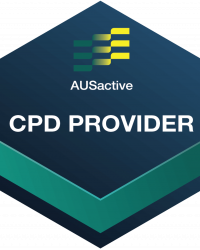Mat Repertoire
Abdominal Work:
Corkscrew
Alternate Names
N/A
Derived From
Classical Mat Work: The Corkscrew
Primary Element
Strength
Why for Primary?
To develop strength and control in thoracic flexion and the deep abdominal muscles transversus abdominis with the challenge of rotation.
Secondary Element
Stability
Why for Secondary?
To develop control in the deep abdominal muscles transversus abdominis to create pelvis and torso stability.
Tertiary Element
N/A
Why Tertiary?
N/A
Repetitions
4-5 each direction
Plane of Motion
Sagittal
Targeted Muscles
For torso flexion the targeted muscles are rectus abdominis or the ‘six-pack’ muscles at the front of the torso to overcome gravity and curl the torso forwards and upwards.
To create pelvis stability and balance the weight of the legs the targeted muscles are the deep abdominal muscles transversus abdominis.
To extend the legs and lift them up and forwards of the torso the hip flexor muscles are used including:
- Psoas
- Iliacus
- Rectus femoris
Warnings
This exercise may be unsuitable for clients where torso flexion or engagement of the abdominals is contraindicated.
The exercise may be difficult for clients who are unable to lift up and overhead with control. Try working through regressions such as hoving the pelvis up and off the Mat first, or the Supine Spine Twist variation with the knees bent.
Execution
Lie supine on the Mat with the legs extended straight out along the Mat. Anchor the arms beside the torso in an A-frame position for stability.
Exhale to tilt the pelvis back and lift the legs up and overhead with control, coming up onto the shoulder girdle. Keeping the legs pressing together inhale to draw the legs to one side, then exhale to draw the legs down and around towards the opposite side before lifting back up onto the shoulder girdle. Alternate sides. Aiming to lower and lift the spine towards the Mat with control as the legs sweep down and around.
Observations
Do a body scan of the client taking note of the following points:
- Head and Neck
- Is the back of the neck long and crease-free? A slight retraction of the neck with the chin tucked can help avoid straining the neck
- Pelvis
- Are the circles even horizontally or is the client biasing one side?
- Is the client able to keep a slight posterior pelvic tilt throughout, and avoid arching into their lumbar spine, particularly as the legs circle low?
- Legs
- Are the legs even when they move to one side? Big toes lined up?
- Are the legs long and extended away throughout?
Learning Style Technique Cues
Auditory – word associations that connect mind and body
- The shoulder stay still but the hips will lift and lower throughout
- Anchor the arms down in an A-frame to help with stability
- Say the client’s name when you’re about to interact with them
Visual
- Imagine tracing the same side circle each side, with the width of the circle the same as the lowest part (its not a U shape)
- You may demonstrate a part of the movement as a visual representation for the client to see, for example with the arms moving like the legs
Kinaesthetic
- Aim to lift the legs straight up, as opposed to swinging them up and overhead with momentum
- Avoid creating a swing with the legs, control the movement evenly around in each direction
- Reconnect into the transversus abdominais when the legs are coming down through centre on the exhale
Modifications and Variations
Regress the exercise by
- Keeping the legs in tabletop and letting the legs move from one side to the other, whilst keeping the knees lined up (often known as a Supine Spine Twist). The hip will lift but keep the shoulders anchored down to the Mat
- Keeping the hips down on the Mat the whole time, still circling the legs down and around without a lift and lowering the pelvis
- Working on Spinal Mobility: Rolling Like a Ball. If your client can’t take hold of the shoulders for a few moments during that exercise it may be too soon to try Corkscrew
- Reducing the size of the circles or range of motion
- Reducing the pace
Progress the exercise by
- Increasing the pace and repetitions
- Making the circle wider and lower (aiming to keep the same distance sideways as downwards)
- Aiming to stay up on the shoulder girdle throughout
Client experiencing tight hip flexors?
- Try and hook one ankle over the other to create some support for the weight of the legs
- Stretch the hip flexors prior to the exercise with Warm Down: Kneeling Lunge
Series and Transitions
This exercise is part of the Abdominal Work series which includes a range of other exercises in the fundamental and progressive repertoire. The Abdominal Work series can also be found in the Reformer and Cadillac repertoire.
The traditional order of the Abdominal Work series is
- Single Leg Stretch
- Double Leg Stretch
- Hamstring Pull or Single Straight Leg Stretch
- Double Leg Lower (not included in the Inspired Academy repertoire, however a similar exercise can be found in the Reformer Feet in Straps: Double Leg Lowers)
- Criss Cross
Inspired Academy follows the order to create stability and mobility before building strength
Warm Up repertoire
Fundamental repertoire
Progressive repertoire

